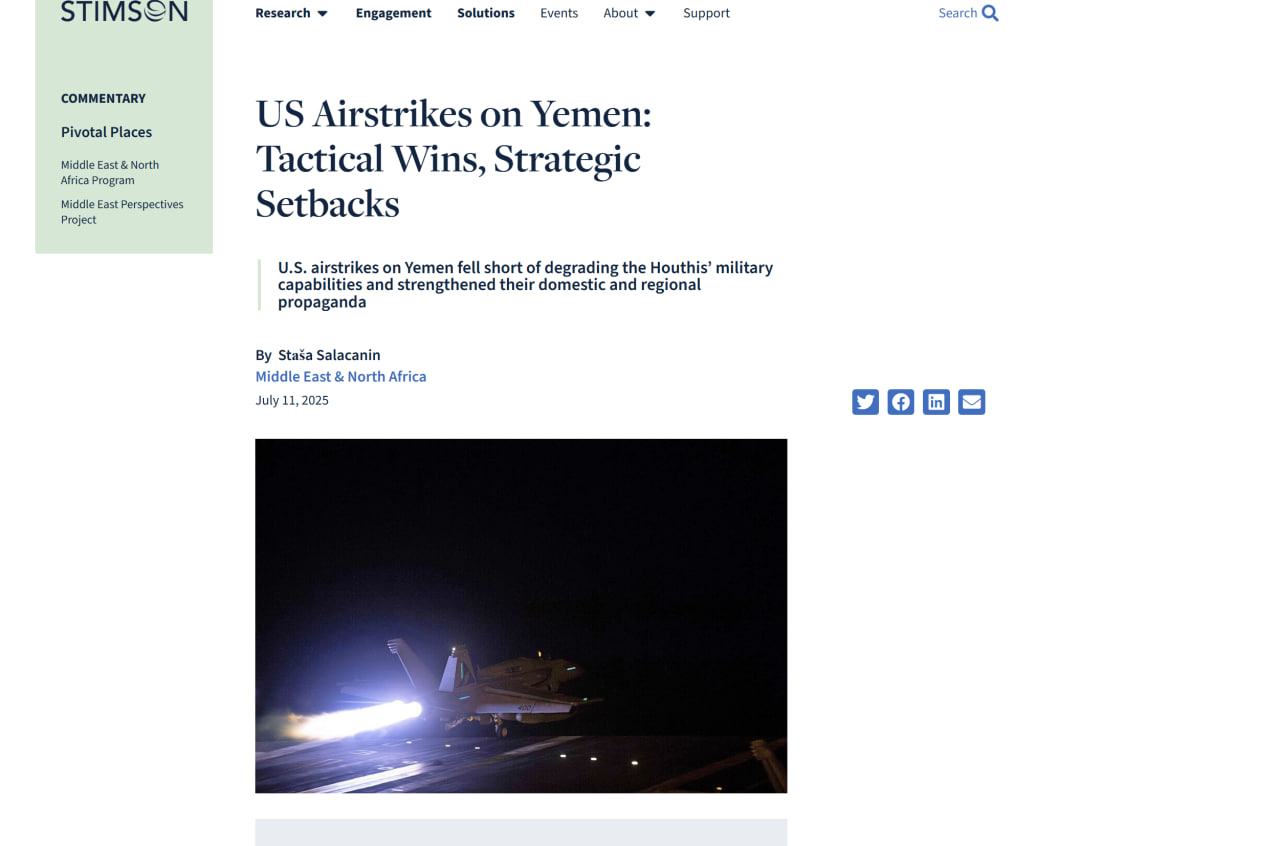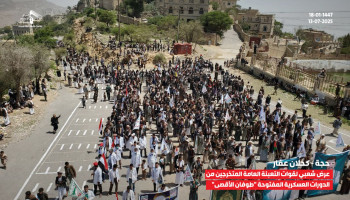The website "Stimson" recently published an article by Barbara Slavin highlighting the strategic setbacks faced by the United States in its aerial campaign over Yemen, despite Washington’s efforts to portray the operation as a tactical success against the so-called “Houthi threat.”
The author noted that the U.S. airstrikes, which lasted three months until President Donald Trump announced their cessation in May, failed to achieve their stated objectives. Instead, they directly bolstered the image and military-political standing of the Sana’a forces both domestically and internationally.
The article suggests that this revealed regional coordination among the “Axis of Resistance,” which cannot be separated from the escalating situation in the Red Sea.
According to the article, the U.S. air campaign, purportedly aimed at weakening Sana’a’s military capabilities, did not prevent the launch of ballistic missiles toward the city of Jaffa in occupied Palestine following the Israeli aggression on Iran in mid-June.
The author further revealed that the U.S. strikes, primarily conducted via satellite guidance, hit limited targets such as assembly facilities but failed to reach critical ballistic missile stockpiles or the infrastructure of the missile deterrence system, which remains operational.
The article also pointed out significant losses incurred by the U.S. military during this campaign, including the downing of two F/A-18 fighter jets and several drones, while the military operations failed to weaken Sana’a’s capabilities as intended.
Analysts cited by the site confirmed that the U.S. airstrikes exposed “intelligence weaknesses” and a failure to locate strategic assets, despite the deployment of aircraft carriers, stealth fighters, and advanced aircraft such as the F-35 and B-2 bombers







